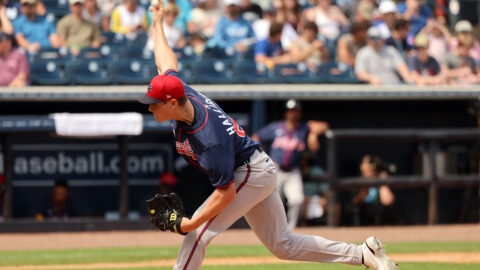When a team surges back from a large deficit in the final month of the baseball season to be in contention for a postseason berth, it's generally easy to figure out why. In most cases, the team with the big lead fell apart, while the team with the huge deficit played flawlessly to get back in the race.
That's the way most observers have described the Rays' comeback from a nine-game deficit to sit in a tie with the Red Sox in the American League Wild Card race entering the final day of the regular season on Wednesday.
"Good pitching, timely hitting," ESPN analyst Barry Larkin said Monday night to describe how the Rays had worked themselves back into the playoff picture.
Not to pick on Larkin, because he's not the only person to make this assumption, but that's an oversimplified explanation. The Rays' play in September has been more uneven than outstanding. They have been great at times and good in stretches, but this is hardly the your typical comeback.
One half of Larkin's statement is mostly correct: The Rays' pitching has been good down the stretch, relative to other teams. Their 3.56 earned run average since Sept. 1 is third best in the AL, while Boston has had the highest ERA in Major League Baseball in the month at 5.90.
Yet the Rays' August ERA was a half-run better at 3.06 and their June ERA was roughly the same at 3.62. Those were sandwiched around a putrid July in which their team ERA was 4.03, but the point is this: In the Rays' supposedly stellar September, they were no better pitching-wise than they were in two of the previous three months.
The other half of Larkin's statement — or, to stop singling out Larkin, let's just call it "the standard storyline for a late-season comeback" — is just plain incorrect. The Rays have not delivered any real improvement in "timely hitting" in September, and the statistics prove it.
The advanced statistics website FanGraphs compiles a stat called "Clutch." Although most stat-oriented fans eschew the idea of "clutch" altogether, the stat itself doesn't try to label certain players (like Derek Jeter) "clutch" or predict who will come through in clutch situations. The stat simply measures how often players come through in so-called "high leverage" situations relative to their normal performance. So a .300 hitter who hits .300 in the clutch is not "clutch;" he's just performing at his usual rate. A 1.00 clutch rating means a player has been neither clutch nor un-clutch (is that a word?). A 2.00 rating means a player has been extremely clutch, while a 0.00 rating means a player has been extremely un-clutch. There's a more in-depth explanation here.
Got all that? Good. Then here's the Rays' clutch number for September: minus-.75.
The Rays have been metrically un-clutch offensively down the stretch. They are 20th in the majors in "clutch" in September. Among the teams that have been more "clutch" statistically since Sept. 1 are the Mets, Indians, Dodgers, Royals, Athletics and Cubs.
The result is a strong 16-10 month (for a .615 win percentage) for the Rays that seems like an .800 win percentage because the Red Sox have stumbled to a 7-19 month. No team in the majors has pitched more poorly than Boston in September, and in the aforementioned clutch stat, the Red Sox are second-to-last in the big leagues with a minus-2.37.
A Rays win Wednesday, coupled with a Red Sox loss, would put them in the postseason and put the finishing touches on an historic final month. For all the credit they would receive and deserve for such an accomplishment, though, the Rays' story is more about the Red Sox than the Rays.



